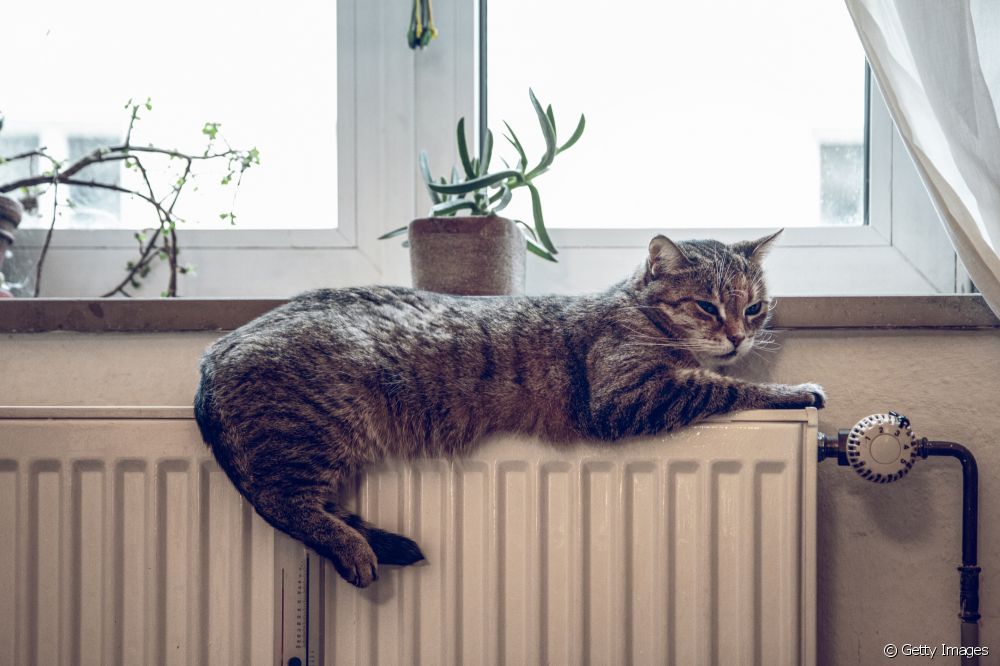What is sudden hind end paralysis in cats? Veterinarian explains all!

Table of contents
If you've noticed your cat having difficulty walking on its hind legs, it's important to be aware. When your cat drags its hind legs, it may seem like a commonplace situation that poses no risk to your feline's health, but the truth is that this is a type of paralysis in cats that can be quite harmful to your kitty. To better understand what this condition is all about,what are the risks, symptoms and most appropriate treatment, the Paws of the House interviewed veterinarian Erica Baffa, who specializes in feline medicine. See the expert's clarifications below!
House Paws: What is it and what are the risks of sudden hind end paralysis in cats?
Erica Baffa: Sudden paralysis is a state or situation of immobility, which can be partial or total, temporarily or permanently compromising the motor function of the feline patient and which puts the animal's life at risk in more serious cases - depending, above all, on the possible causes, which are varied. The condition can be caused by thromboembolism secondary to hypertrophic cardiomyopathy, lymphomas, etc.spinal cord injury (may or may not be induced by FeLV) and even by spinal trauma with spinal cord injury.
This type of paralysis in cats can lead to various organ dysfunctions when distinct innervations are compromised, as some cats may no longer be able to urinate on their own, needing someone to help them decompress their bladder. This factor of urine retention leads to the possibility of urinary infection which worsens the patient's condition. Other cats may present with abrasionsand skin ulcers due to direct friction or contact with soil, and in some circumstances skin necrosis may occur when there is circulatory compromise. Muscle atrophy may also occur.
Although there are some of these limitations that may arise concurrently or in isolation, some cats with paralysis may adapt well to changes if the cause is not progressive and has the possibility of good survival.
See_also: "Zoomies": what are fits of euphoria in dogs and cats?Is a cat having difficulty walking on its hind legs always a sign of sudden paralysis?
E.B: As the name implies, sudden paralysis can happen suddenly. In the vast majority of cases, we should be aware of more serious possibilities of sudden paralysis, such as aortic thromboembolism secondary to hypertrophic cardiomyopathy. Another cause would be medullary lymphoma, especially in FeLV-positive cats. Some cats may, for example, have a neural compression that causes itThese patients will show more subtle signs, which can often go unnoticed by their guardians, while others may have trauma to the spine and stop walking.
See_also: Mini breeds: 11 smaller versions of medium and large dogs
What other symptoms can be seen in the cat with hind leg paralysis?
E. B: Symptoms depend on the underlying cause. When the cause is aortic thromboembolism secondary to hypertrophic cardiomyopathy, for example, the most common symptoms include loud vocalization due to intense sharp pain, followed by vomiting, rapid breathing, difficulty breathing, coughing, loss of appetite, and despondency. These cats typically develop paralysis in the hind legs, loss of tonusfemoral and a decrease in temperature in the hind limbs due to thromboembolism compromising the entire blood circulation. Syncope or sudden death of the animal may occur. If the cause is a spinal injury, painful tenderness may occur.
Is there treatment for the cat suffering from sudden paralysis of the hind end?
E. B: There is treatment and it varies according to the main cause. The treatment for thromboembolism is vascular surgery immediately after the event - usually when the diagnosis is made, the surgical procedure is done within 6 hours of the event and there is a chance that the patient will walk again. The diagnosis in this case is usually made based on the clinical analysis of the animal and finding the thromboembolism.thrombus, which can often be seen with ultrasound. Remembering that echocardiography should be performed to assess whether there are more thrombi or not. Medications that prevent clot formation can also be administered. In addition, analgesic support for pain is made.
How can sudden paralysis of the hind end be prevented?
E.B: Prevention is possible by performing what we call preventive medicine and check-up on the feline patient. The cat should be taken to the veterinarian for routine inspection, physical, clinical and laboratory examination. Imaging tests that can assess cardiac conditions, such as echocardiogram and electrocardiogram, are indispensable. Imaging tests, such as x-rays and CT scans, as well as blood testsWhen we are able to diagnose early, it is possible to treat properly and prolong the patient's life always with love and respect for the lives of kittens.

